The Botanical Garden Collection Essay
Introduction, the principles of organization and educational value, the exhibited species and areas of interest, works cited.
The botanical garden is one of the most interesting places among the remarkable sights in almost every city. Last month I was lucky to visit the New York Botanical Garden presenting the vast diversity of plants from the different parts of our planet.
The aim of this essay is to tell you about my visit describing the collection of the botanical garden as well as the organization of its functioning.
The characteristic of the principles of organization of the New York Botanical Garden should be started from the statement of its mission which is expressed as “being an advocate for the plant kingdom” (“Mission and History,” par. 1). The realization of the mission is accomplished by achieving the Garden goals.
“The Garden pursues its mission through its role as a museum of living plant collections arranged in gardens and landscapes across its National Historic Landmark site; through its comprehensive education programs in horticulture and plant science; and through the wide-ranging research programs of the International Plant Science Center” (“Mission and History”, par. 1).
The garden occupies a space of 250 acres, and it is divided into 50 distinct parts, each of which is devoted to the certain species collection. Besides the exhibited collections, there is a research laboratory which represents a scientific center of the Botany study. There is also a specialized library serving the needs of researchers and students. The maintenance of the garden is fulfilled in the frameworks of the overall program of sustainability promoted by the Botanical Garden.
Certainly, the New York Botanical Garden has an educational value as it gives an excellent opportunity to see the rare species of the plant kingdom, to know more about the plants healing properties and the utility of some species in the industry. Moreover, the Garden periodically issues the reports summarizing the results of the scientific research on the problem of global warming, thus, contributing to the environment protection.
At the time of my visit to the New York Botanical Garden, there were several ongoing exhibitions. I decided to go to the one presenting the healing plants from all over the world. The exhibition took place in one of the gardens reconstructed in the style of the Italian Renaissance.
Among the species seen, the following ones were especially interesting for me: the foxglove, a beautiful bloomy plant the extract from which is used to treat heart diseases due to its content of certain poisonous substances, saw palmetto, which is broadly used in the medical industry as well as coconut palms, the products of which provides us with the some of the best sources of antioxidants.
“Antioxidants are our first line of defense against free radical damage and are critical for maintaining optimum health and wellbeing” (Percival 1). The exhibition made me think that, probably, all that we need for our health can be found in nature.
To sum up, all the above mentioned, it should be said that the New York Botanical Garden exhibits one of the most admirable collections of plants in the world. The time spent in the Garden allowed me to get additional knowledge of the healing plants while enjoying the special atmosphere of the place. Unarguably, it is worthy of visiting the New York Botanical Garden for not only the students majoring in Botany or Biology but for everyone fond of nature and its beauty.
Dr Percival, Mark. “Antioxidants.” Clinical Nutrition Insights 96.1 (1996): 1-4. Print.
“Mission and History” . New York Botanical Garden . n.d.
- Chicago (A-D)
- Chicago (N-B)
IvyPanda. (2022, August 1). The Botanical Garden Collection. https://ivypanda.com/essays/the-botanical-garden-collection/
"The Botanical Garden Collection." IvyPanda , 1 Aug. 2022, ivypanda.com/essays/the-botanical-garden-collection/.
IvyPanda . (2022) 'The Botanical Garden Collection'. 1 August.
IvyPanda . 2022. "The Botanical Garden Collection." August 1, 2022. https://ivypanda.com/essays/the-botanical-garden-collection/.
1. IvyPanda . "The Botanical Garden Collection." August 1, 2022. https://ivypanda.com/essays/the-botanical-garden-collection/.
Bibliography
IvyPanda . "The Botanical Garden Collection." August 1, 2022. https://ivypanda.com/essays/the-botanical-garden-collection/.
- The Royal Botanical Garden, KEW
- The Botanical Evidence: The General Description and the Analysis
- Types of Tress in Alaska
- Cloning of Plants at the Botanic Garden
- Botany and Zoology in the Classroom
- Montreal City Hall Architecture
- An Aesthetic Experience of Nature
- "Romeo and Juliet" and "The Winter's Tale" Comparison
- Importance of Environmental Conservation for Public Health
- Imogen Cunningham, an American Female Photographer
- The Globalization of Coffee Production and Consumption
- Spons Definition and Types
- Sustainable Development: Progress or Illusion?
- Impact of Policies on the Practice of Urban Agriculture in Los Angeles
- Brazil Economic Development and Conserve the Environment
- Entertainment
- Environment
- Information Science and Technology
- Social Issues
Home Essay Samples Environment Garden

My Experience Visiting the U.S. Botanic Garden
*minimum deadline
Cite this Essay
To export a reference to this article please select a referencing style below

- Environmental Protection
- Water Scarcity
- Endangered Species
- Wildlife Conservation
Related Essays
Need writing help?
You can always rely on us no matter what type of paper you need
*No hidden charges
100% Unique Essays
Absolutely Confidential
Money Back Guarantee
By clicking “Send Essay”, you agree to our Terms of service and Privacy statement. We will occasionally send you account related emails
You can also get a UNIQUE essay on this or any other topic
Thank you! We’ll contact you as soon as possible.

PERADENIYa BotanicAL Gardens
This garden was established in 1821 for the receipt and experimentation of plants introduced for economic and environmental development. Currently the garden is engaged in activities related to authentication, ethno-botany, floriculture and primarily ex-situ conservation of plants. However its history dates back to the 14th century when Royalty ruled the central highlands of Sri Lanka. It was a Royal Gardens from 1780 – 1798.
The gardens are home to a large and diverse variety of plants especially including endemics and species extinct in the wild. This 60 ha land at an elevation of 460 mt. above sea level in Peradeniya includes 4000 plant species. The gardens occupy a horse- shoes shapes peninsula around which flows the chief and longest river of Sri Lanka the Mahawali River.
The scenic splendor of the garden is highlighted by flourishing growth of huge tropical trees in its arboretum, flower garden with a colourful ribbon border and the Mahawali River that flows around its fringes. Prime attractions within the gardens frequented by visitor include the Orchid House with more than 300 varieties of exquisite Orchids blooming in profusion.
The memorial collection consists of trees planted by eminent persons including heads of states, state guests, astronauts and royalty during their official visits to the gardens. The Palm collection is among the best in Asia with about 220 species. Other attractions are the great lawn, spice gardens, Palm avenues, plant house and Cacti display, lake and flowering trees.
These gardens receive considerable rainfall both during the South West and North East monsoons and hence are lush and verdant throughout the year. Three seasons are earmarked as April to June, August to September and December when most visitors fill the gardens and flowering is at its peak.
Peradeniya Botanical Garden Peradeniya Rd, Kandy
- [email protected]
- +94 0812388238
- Please visit website for further details
Start typing and press enter to search

- cities/villages
- World heritage sites
- Mountaineering& ADVENTURE
- Culture Watch
- Useful Info/Tips

Godawari botanical Garden

Godawari Botanical Garden is The greenest, most pristine part of the valley that lies at its southeastern edge. Officially it is called National Botanical Garden . It is For those who love to be surrounded by greenery, the Godawari at the southeast edge of the Kathmandu valley is the ideal place to be. The Godawari sits at the foot of Phulchowki (2,760m), the highest peak of the valley rim where revelers rush to, every time it snows towards winter’s end. Phulchowki means the ‘Mountain of Flowers’ and indeed is resplendent during the spring, cloaked in colorful rhododendron flowers. The valley’s only botanical garden, the National Botanical Garden lies here in the Godavari, at the very edge of Kathmandu valley, spread over a large area and has a couple of streams flowing through it.
Table of Contents
History/Background of Godawari Botanical Garden
The National Botanical Garden, Godawari, Lalitpur, Nepal has established in 1962 AD (2019BS). This botanical garden was designed by two British designers G.A.C. Herklots and Tony Schilling. It is widely regarded as a center of plant conservation, education, research and recreation. It spreads over an area of 82 ha. of varying topography, among which, 40 ha. has been developed into various garden units. It is surrounded by natural evergreen forests dominated by Schima-Castanospsis and Alnus. It is located at the foothill of Mt. Phulchowki (2765 m) the highest peak of Kathmandu valley and lies about 16 km southeast of central Kathmandu . A natural stream (Godawari) is running from the mid garden.

Attractions on the way to Godawari Botanical Garden
The drive to the Godawari, 10 km south of Patan is interesting as it passes through Harshiddhi, a typical Newari town with a rather sinister history. The well-known pagoda-style Bal Kumari Temple was once believed to have practiced child sacrifice as a means to appease the gods. There are steep steps leading up to the shrine.
You might also like: Garden of Dreams
After Harisiddhi, the drive is pleasant as it goes through less densely populated areas. The Godavari, a peaceful little village surrounded by dense jungles acquired its name from a repenting ascetic who went to a place also known as the Godavari in India to do penance for killing a cow which is considered sacred by Hindus and killing one is a criminal offense in Nepal. Upon returning to his native village where he established the temple complex of Panch Dhara or five water spouts, whose waters are supposed to flow down to the river Godavari in India.
Flora and Fauna
The Godawari is home to at least 256 species of birds (one-third of all bird species in Nepal) including the famous Spiny Babbler which was re-discovered here after it was thought to have been extinct for 104 years. It is also popular for the more than 300 species of butterflies and moths found here.
The Botanical Garden, founded by King Mahendra in 1962 is the only one of its kind in the country boasting 4,500 specimens of flowering and non-flowering plants including large varieties of orchids. There are lovely walks around the garden where you may encounter magpies and mynas flitting from tree to tree. There are butterflies all over the gardens but most of the flowers are in the enclosed area with a sign that reads National Botanical Garden.
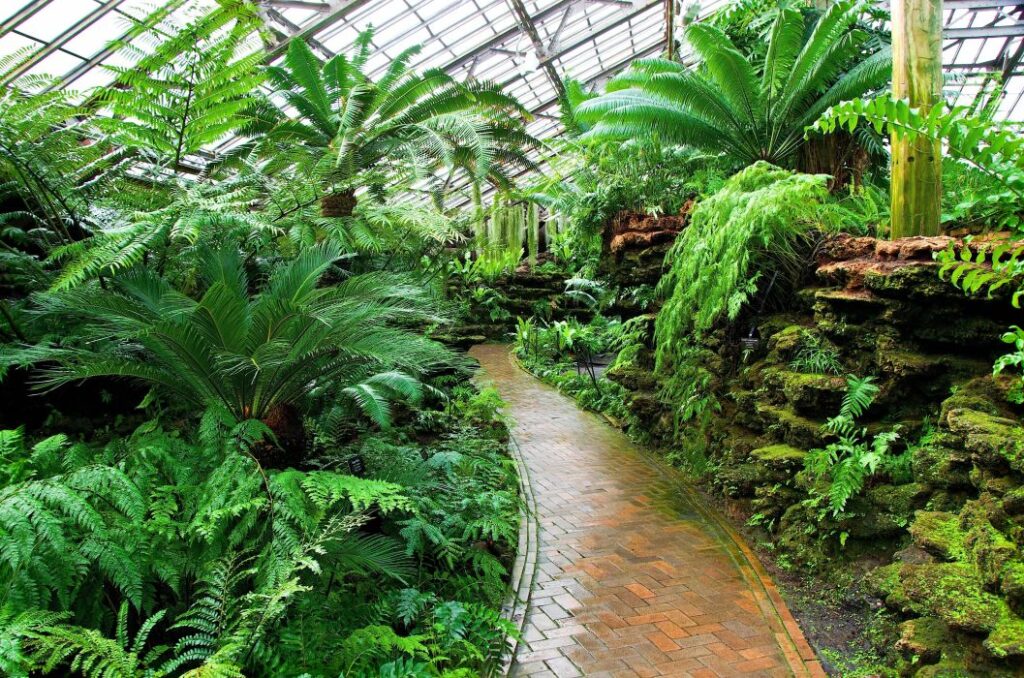
This area is closed for lunch from 1 – 2 pm. There are many species of flowers including orchids and one of the greenhouses has a collection of Bonsai plants. There is an exit gate at the other end of the garden which is quite useful if you need to get back to the minibus park which is closer to this end.
Entry and other fees
How to reach godawari botanical garden.
If you are looking for a public bus It required to Travel to Lagankhel(Patan). You can reach Lagankhel from most parts of the main city. From there you have to take the bus to Godawari. There is no regular schedule but the microvan basically makes round all the time 7 days a week from 5 am to until 9 pm. If there is no traffic you will get Micro Van every 10/15 minutes.
The taxi might be expensive as they will add a waiting charge but if you took a day tour from a reasonable local company it will be USD 30-40 for the whole day.
Godawari Botanical Garden is Located at Godawari Municipality ward no 3, Lalitpur.
Godawari to Phulchoki view
If you head toward the south from the main crossing along a partially sealed road and climb up 600m you come to the Phulchowki Mai Temple near the marble quarry. Damaged but not destroyed in the quake, this three-tiered pagoda temple is dedicated to one of the Tantric mother goddesses and the two large pools before the temple compound are fed by nine spouts (known as the Naudhara) that represent the nine streams that flow down from Phulchowki.

To get to the top of Phulchowki, one of the options is a full-day hike along dirt tracks from Naudhara Kunda, or a very rough ride on a road only suitable for 4WDs, mountain bikes, or motorcycles. Walking along the footpath is advisable as the main road goes right around the mountain taking the long and winding way up. The hike to the top may be tough but the rewards make it worth all that trouble. The breathtaking view from the top covers the entire Kathmandu valley and a wide panorama of mountains from Dhaulagiri in the west to Kanchenjunga in the east. During spring, the rhododendrons and other wildflowers are in bloom. You will also come across many orchids clinging onto the trees. At the top are also a communications tower and the other Phulchowki Mai temple. There are no eating facilities here so one has to bring food and water and walk in the company of fellow travelers for safety. The round trip will take about seven hours (four hours up and three hours down), so an early start in the morning is advised in order to be back before dark. It is also important to check the status of the trails before heading up as landslides occasionally block the road to the top. The drive up takes about 45 minutes.
Godawari Kunda, Godawari Temple
Instead of veering left towards the Godawari botanical Garden from the fork, if you stay on the road and continue for 100m, you arrive at the Godawari Kunda, a spring where the sacred water of the Godavari River pours down from the mountain. There is a Tibetan monastery nearby. A huge festival takes place at the Godawari temple once every 12 years in the autumn season when pilgrims from around Nepal arrive to bathe and gain merit.
Bishanku Narayan
Past Godavari village and partially hidden in a light forest up in the hillside is the Bishanku Narayan, one of the more important Vishnu temples of Kathmandu valley. The shrine lies in a natural cave set within the hillside. The walk is about an hour long from the botanical gardens.
RELATED ARTICLES

Tourism in Nepal – Wonders of Nepal

Annapurna Butterfly Museum -Annapurna Natural History Museum

Khaptad National Park
It is good place to hangout with friend in clean environment far from city pollution and noise.
Most pristine part of the valley. Loved it .
LEAVE A REPLY Cancel reply
Save my name, email, and website in this browser for the next time I comment.
- SEE & DO
- EAT & DRINK
- Penang Mainland
- Itineraries

16 Best Things to See, Do (and Eat) at Penang Botanical Gardens
Right at the foothills of Penang Hill, the verdant Penang Botanical Gardens were established in 1884 and have been George Town's green lung since then. Set only 10 minutes drive away from the city, not visiting this historical garden is a huge mistake. Here are our suggestions to make the best of your visit to Penang Botanical Gardens.
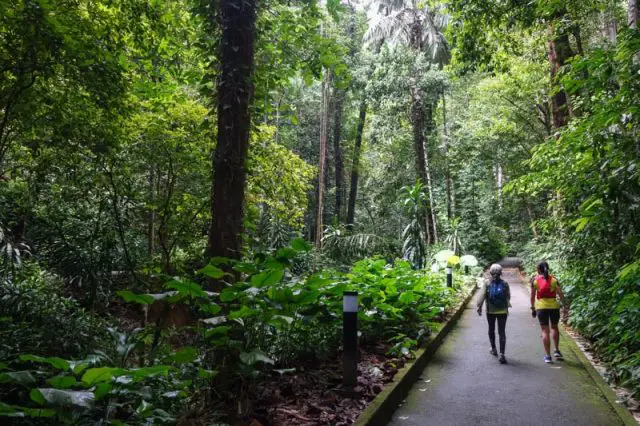
Penang Botanical Gardens are certainly one among the coolest things to do in Penang but are often overshadowed by other Penang attractions such as Kek Lok Si temple , Entopia , and the popular Penang shopping malls .
One thing is certain though: if you love nature and are not much of an adventurer, Penang Botanic Gardens (yes, people call them either “Botanic” or “Botanical” without much difference) are an easy trip from George Town and a break from its famous Penang Food — otherwise, you can always go to Balik Pulau to check out the greenest side of Penang island.
If coming from George Town, it’s a mere 10 minutes drive to Penang Botanical Gardens: set at the bottom of Penang Hill , they are the green lungs of the city, and are said to be the closest botanic gardens to a city center in the world.
MORE PENANG GREENERY – Bukit Hijau Guide
This article of course is our humble guide to inspire your visit to Penang Botanical Gardens. Here you will learn all about:
- Reaching Penang Botanical Gardens
- What you can see and do at Penang Botanical Gardens
- What to Eat after your visit to Penang Botanical Gardens
Article Contents
Where are Penang Botanical Gardens?
First of all, here is a map of Penang Botanic Gardens:
There is an ample car park just in front of the Botanic Gardens’ entry gate. To its left is the road to the top of Penang Hill. You need a special permit to drive up with your own vehicle.
Penang Botanical Gardens by Rapid Penang Bus
You can reach the Botanic Gardens using Rapid Penang Bus Route 10, shuttling from Weld Quay, the old Penang Ferry jetty, via Jalan Ria near KOMTAR , Gurney Drive, and finally the Botanical Gardens. The bus back to George Town is not too frequent — be ready to wait about half-hour, and make sure you walk a few minutes outside of the car park to the bus stop in front of an apartment building down the road.
Reaching the Top of Penang Hill from Penang Botanical Gardens
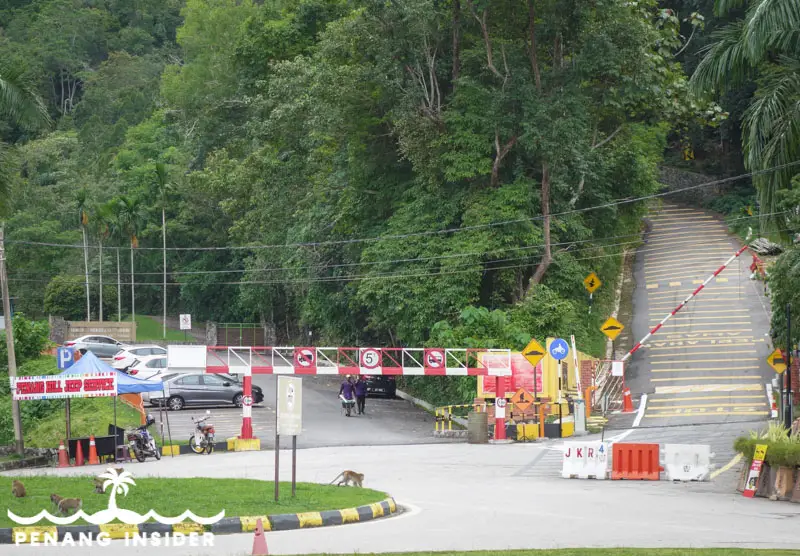
Usually, a jeep service to the top of Penang Hill was available from the car park, but it is currently not operating because of the coronavirus lockdowns. Nobody prevents you from walking up along this tar road, but we do not recommend it as it’s boring — there are several other options to hike to Penang Hill , including the Moongate hiking trail that starts about a hundred meters before Penang Botanical Gardens’ entrance.
If you are interested in hiking, we have a guide to the best trails in Penang Mainland , which include Cherok Tok Kun Recreational Forest , Bukit Juru , Bukit Pachor State Park and the scenic Frog Hill .
Where to Stay near Penang Botanic Gardens
We already compiled lists of recommended best boutique hotels in George Town , Penang budget hotels , Penang backpacker hostels and best 5-star hotels in Penang , but these are a few quick suggestions if you wanted to base yourself near Penang Botanical Gardens.
Waterfall Hotel is the closest to Penang Botanical Gardens, and has simple, well-appointed rooms near to several places to eat. Check prices on BOOKING | AGODA
G Hotel Gurney is one of Penang’s best 5-star hotels and has all the facilities, bells and whistles to match. It’s also next to two of Penang most popular shopping malls. Check prices on BOOKING | AGODA
G Hotel Kelawai is the second born in the G Hotel family, facing busy Kelawai road. It has impeccable rooms, offers one of Penang’s best buffet , and has a fantastic rooftop bar with amazing sunset views. Check prices on BOOKING | AGODA
A Brief History of Penang Botanic Gardens
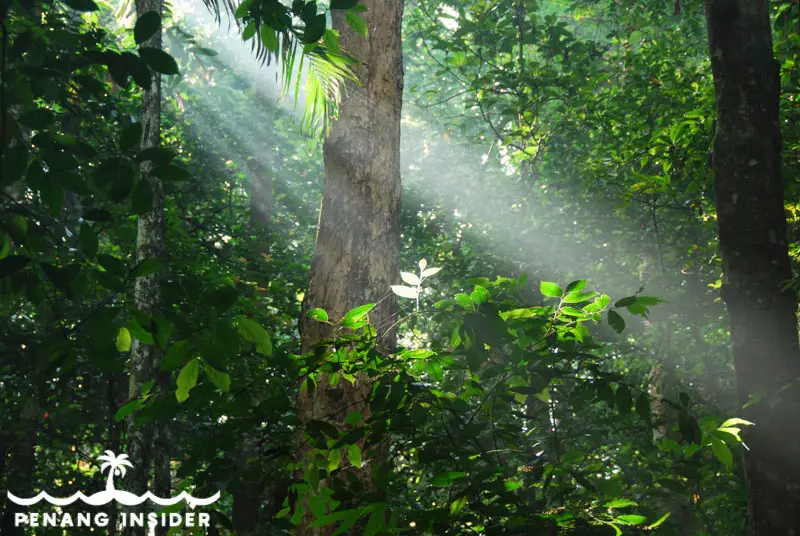
Established in 1884 almost at the same time of the beautiful Taiping Lake Gardens — one of Perak’s main attractions — Penang Botanical Gardens date back to 1884 and were previously known as Waterfall Gardens from the large, sloshing source of water found within them.
The first curator was Briton Charles Curtis — the Curtis Crest elevated walkway at the Habitat Penang Hill is named after him — who transformed a lush valley in an old granite quarry into these gardens at the foot of that waterfall. Even today, Penang Botanic Gardens maintain their original English-style design, with large open lawns hemmed in by hills covered with viridian tropical rainforest.
The original colonial interest here was of course spices, but Charles Curtis was also interested in Penang’s native plants. He contributed immensely to the discovery and classification of Penang’s flora, and introduced many plants in these Botanic Gardens.
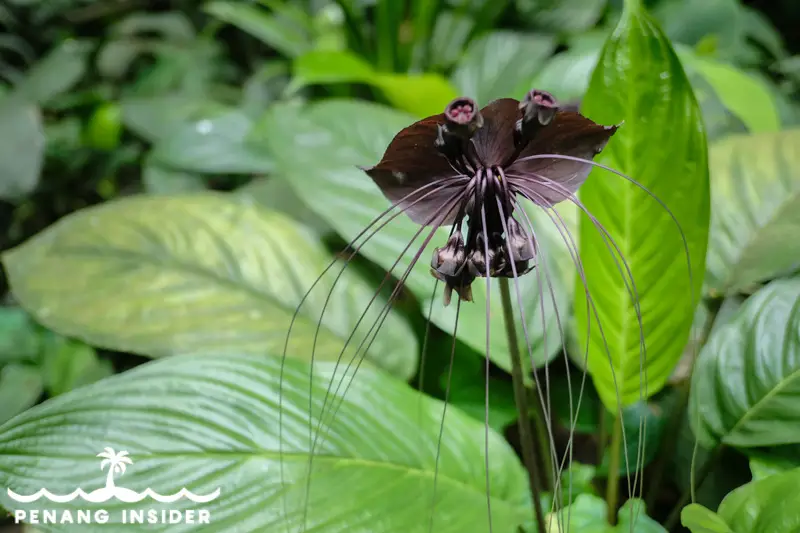
In 1910, the Gardens risked being flooded to make space for a water reserve, but the plan did not go on beyond the small water reservoir that even today occupies the northernmost side of Penang Botanical Gardens. During World war II, the Japanese used tunnels by the Botanical Gardens’ Lily Pond to store ammunition and facilities.
In 2003 and 2004, Penang Botanical Gardens expanded the area from 29.14 hectares to the surrounding forest, reaching 242 hectares of protected areas that’s a habitat of diverse Malaysian animals such as macaques, giant squirrels, dusky leaf monkeys, and many others.
Penang Botanical Gardens entrance fee and operating hours
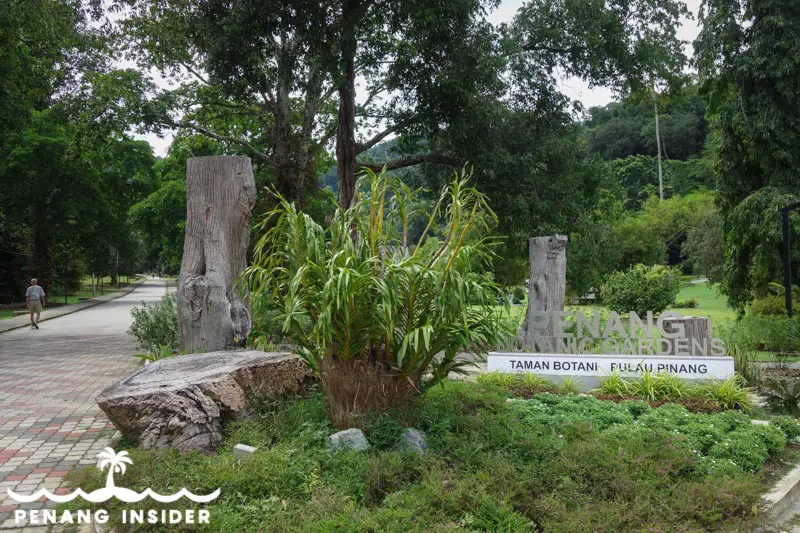
The entrance fee to Penang Botanical gardens is free of charge.
At the moment, the Gardens are open from 7 am to 7 pm, and subjected to entry regulation under Malaysia’s Movement Control Order, meaning, you must enter wearing a face mask and register yourself through the smartphone application MySejathera. For the moment, a guard will count visitors as there is also a limit of 200 people inside of Penang Botanical Gardens enforced at all times.
Best Things to do at Penang Botanical Gardens
Penang Botanical Gardens are better visited on foot. There is ample — and free — parking in front of the main gate, where you can park your vehicle and start walking to enjoy these beautiful grounds.
The following are suggestions on some of the best things to see and do at Penang Botanical Gardens.
1 Check out the Aquatic Garden
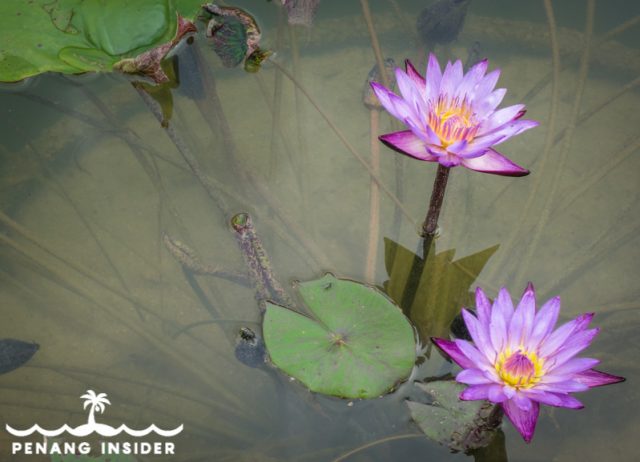
This garden welcomes visitors before the main gate of Penang Botanical Gardens with fountains and four large pools of aquatic plants, like the Giant Victoria water lily and lotus.
2 Walk in the Formal Garden
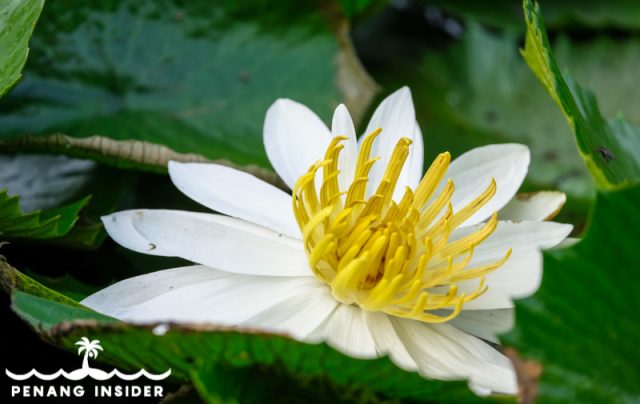
Set right in front of Penang Botanical Gardens’ main gate, the Formal Garden has the features of an English garden, where plants and building structures are organized in symmetry at different levels of height. In the old days, this area was used to host event, tea parties, and other official colonial affairs.
3 Visit Penang Botanic Garden’s Japanese Garden and Bambusetum
Don’t miss a stroll in this miniature interpretation of nature, framed the Japanese style. There’s a striking red Japanese archway here, and stone structures that mimick waves, walkways and rivers. To the right side of the arch, clusters of bamboo soar around a stream, offering an abode of peace and quiet to visitors.
4 Enter Penang Botanical Gardens and start your Walk
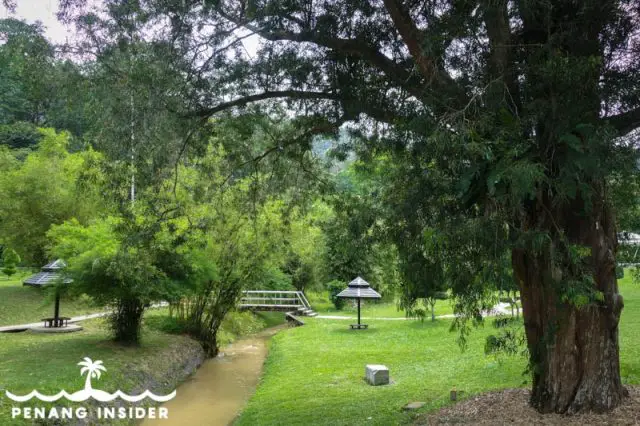
After having browsed the outside gardens, access the Penang Botanic Gardens proper, and start walking either clock or counter-clockwise along the perfectly paved road that will take you deep inside the gardens’ world of discoveries. If walking, a circuit of the grounds will take you between 40 and 60 minutes.

5 Check out local artistry and buy some refreshment at Botanika The Garden Shop
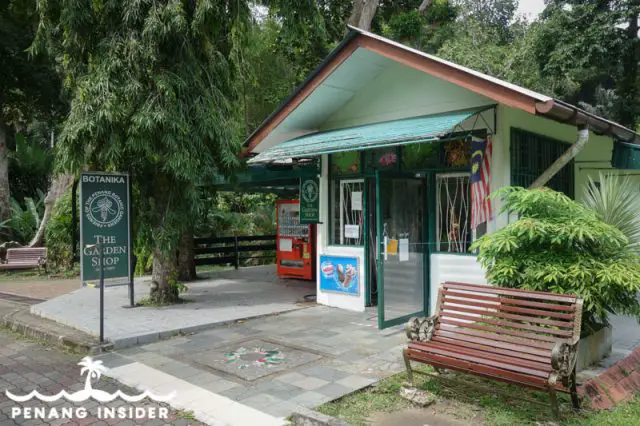
Just to the right side of the entrance to the Botanic Gardens of Penang, you’ll find a small boutique, Botanika. This place sells the usual souvenirs you can find in George Town, plus drinks and packaged ice-cream. But the interesting thing is, it’s run by the organization Friends of Penang Botanic Gardens who not only organize guided visits to the park, but also sell their own articrafts which will make for a different, special type of gift. Free information is also available here.
6 Enjoy Penang Botanic Gardens Many Plant Species
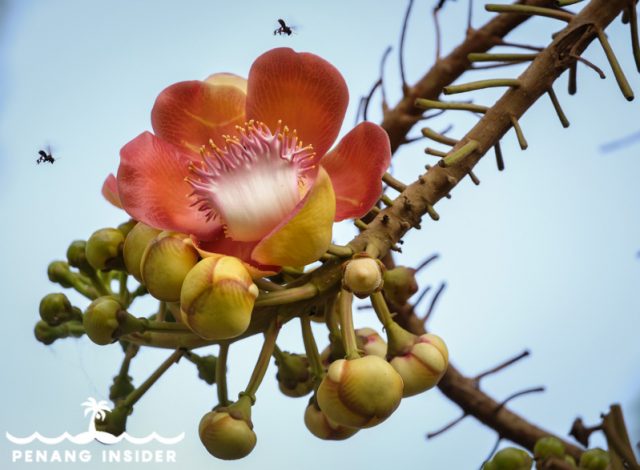
The reason why you have come here is to enjoy nature, so please look at the trees. Penang Botanical Gardens are one of the few places in the whole island where you may see, among others, the rare Cannonball tree. It blooms in spectacular flowers during spring, but in the winter, it becomes full of big, brown balls with a hard shell. There are trees and plants from as far as New Zealand here.
7 Do some Exercise!
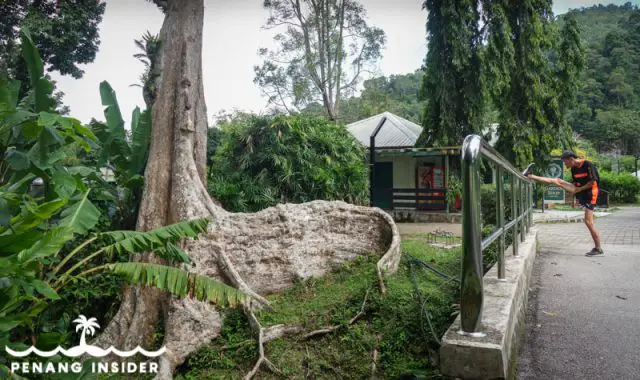
Penang Botanical gardens are a favorite spot for locals to come jogging and stretching their legs. The paved road that goes all around the gardens is ideal for running in a loop without interruptions and the noise of cars. You can run around the main circle, or take the road uphill at the Herbarium to make a longer loop that passes near the water reservoir. If you are looking for a clean, nice and inspiring place to run in Penang, we can hardly think of a better spot than the Botanical Gardens.
8 Marvel at the Orchidarium and the Fern House
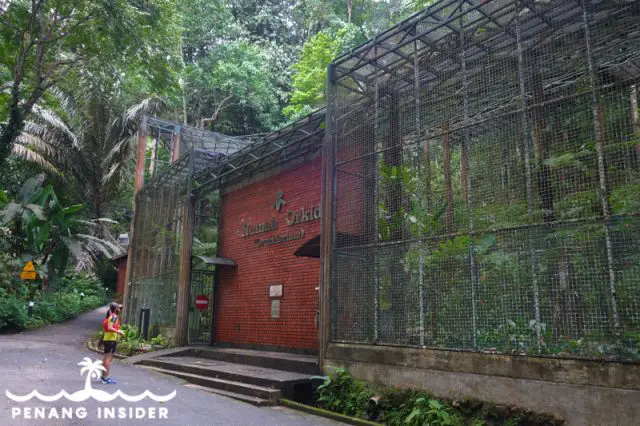
Truth be told, as of late the greenhouses inside Penang Botanical Gardens have often stayed closed and unmanned. As an upgraded is expected when tourism will restart in full steam, for now we recommend at least to have a look through the gates of the Orchidarium and the Fern House. Their unsual pollination syndrome produce some unusual flowers you can see at different times of the year.
9 Chill by the Bandstand
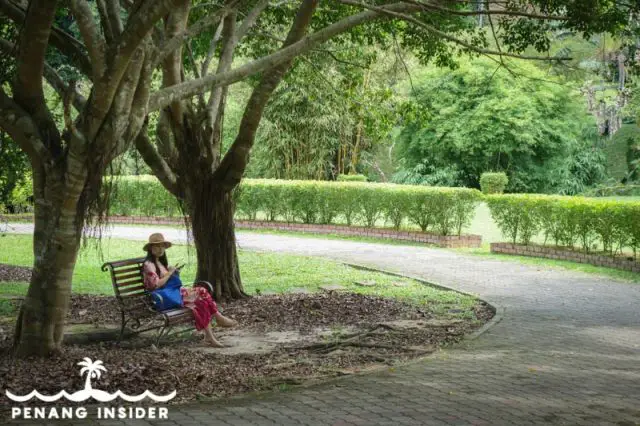
Set in the center of Penang Botanical Gardens, the bandstand dominates on the whole park and is a nice place to sit down and rest, especially in the hottest hours of the day. From here, you’ll see the Herbarium on the western side, right across one arm of the river that bypasses the central part of the gardens.
10 Taste the Rainforest on the Curtis Trail
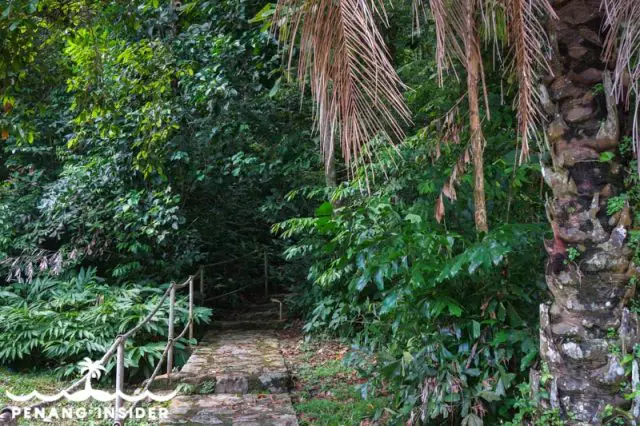
This 1.5km-long granite-floored forest trail starts from the gazebo beside the palm collection. In the spirit of the name of Penang Botanical Gardens’ original curator,Curtis Trail will lead you to sample a deeper look inside Penang’s tropical jungle ending at the Lily Pond. Once you’ll have reached the summit of this steep trail, you’ll be rewarded with views of the remnants of a building which is said to be Curtis’ quarters, which were destroyed by the marauding Japanese during World War II.
11 Visit the Lily Pond
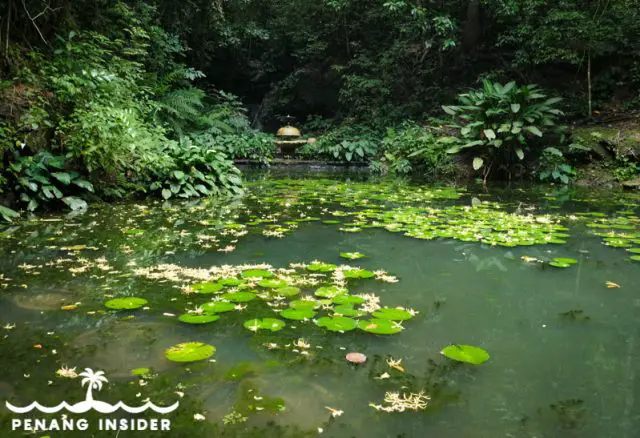
A granite-floored path leaves Penang Botanical Gardens main path to just inside tall trees and jungle to a hidden gully with a mini-waterfall flowing into a pond covered with water lilies. Red karp and a few tortoises can be spotted here, too, and the area is scenic and relaxing if you love forest sounds and, of course, its eternal humidity. Be careful when treading around here, as the granite may get slippery, especially after rains.
12 Take the Aroid Walkway
“Aroid” is a common term to refer to the plants in the Taro family, the Araceae. You may see diverse species of aroids from Asia, Africa and the American tropics grow alongside a serene stream from this Middle Bridge situated in front of the Orchidarium.
13 Meet some Local Wildlife
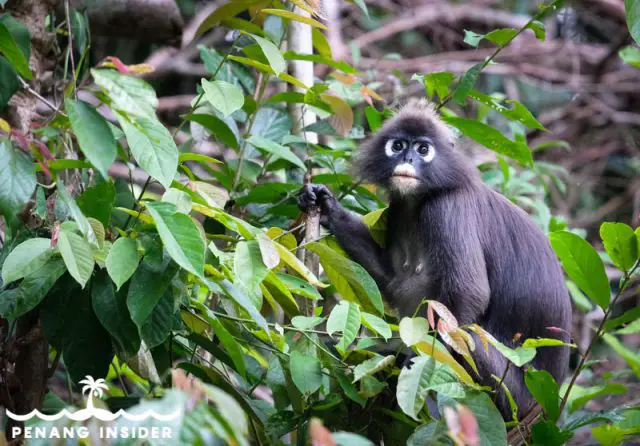
Penang Botanical Gardens are of course a haven of biodiversity, but are particularly famous for their population of monkeys. The most common are macaques, who have become symbiotic with humans and come down from the forest because (silly) tourists feed them even though it’s forbidden. If you take some time to hike a bit further into the surrounding jungle, you may spot the beautiful (and more endangered) Dusky Leaf Monkey, with its natural “white spectacles”. You can read ore about Penang Animals here .
14 Take a look at the Bromeliad House
Maybe you don’t know that the pineapple is the most common Bromeliad, but the other species on show here have pretty foliage with rosette arrangement. Have a look at several types of decorative Bromeliad, both terrestrial and tree-hanging, in this pavillion.
15 Visit Penang Botanic Gardens Waterfall
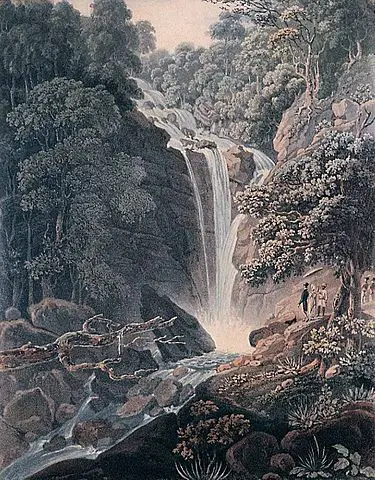
The call to fame of Penang Botanic Gardens, this 122-meter-tall three-tiered waterfall was extremely famous back in the 1960s and 1970s. Today unfortunately — or a boon in disguise, depending how you feel about nature — the waterfall sees very few visitors as the trek to reach it is closed.
You need to seek permission from the Penang Water Authority (Perbadanan Bekalan Air Penang Island)before being able to come here to visit.
Hiking Penang Hill from Penang Botanical Gardens
Set right at the bottom of a flank of Penang Hill, Penang Botanical Gardens are the starting point of a few trails that snake from the valley up to this 800-meter-high mountain. Here are some useful information to strike out and explore more.
16 Hike from Moongate to Penang Botanical Gardens
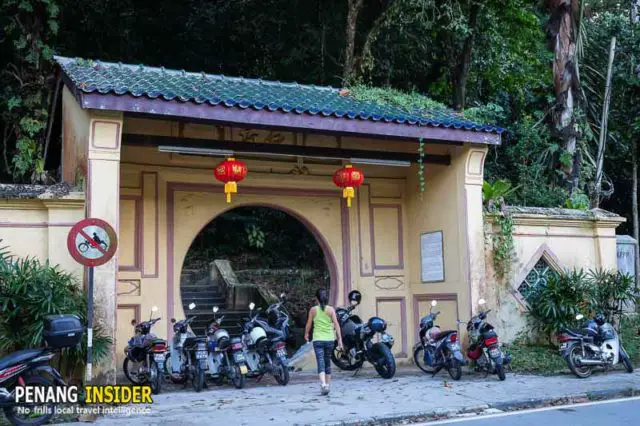
The main circuit that takes you above Penang Botanical Gardens starts at Moongate, the former Chinese-styled access arch to a millionaire home. We have already described how to hike from Moongate to Station 5 . From here, you may proceed to Station 84 via Bukit Cendana. It’s a steep climb that rewards hikers with open views over the eastern side of Penang island and Penang bridge at the popular Rainbow Rock viewpoint.
From here it’s only about 15 minutes to Station 84, a very well-maintained area with public toilets on the paved tar road to Penang Hill. From here, you can continue up, but to return to Penang Botanical Gardens, from Station 84 you shall follow the ridge back down to reach the colorful (as it’s painted as a rainbow) Station 46. From here, you can enter Penang Botanic Gardens via the steep staircase that lands on the upper western side of the park, near the Herbarium.
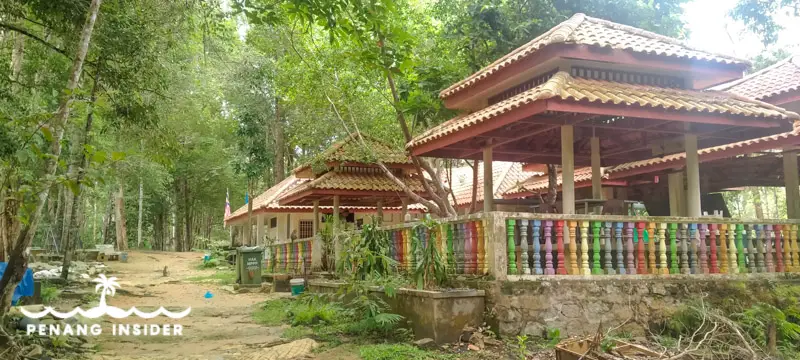
Of course, you can start the hike from Penang Botanical Gardens near the Herbarium and proceed in reverse as explained above. From Station 46 is also possible to walk to the northwest towards Tanjung Bunga and Batu Ferringhi. These paths are interconnected and with a good map (we often use the free Maps.me) you’ll be able to plan a proper itinerary.
What to Eat at Penang Botanic Gardens
With all this walking, we are sure you must be hungry. Penang Botanical Gardens don’t have a staggering amount of choices nearby, but if you are OK with some simple food, you can easily have a bite here and avoid returning to town.
On the right-hand side of the parking lot is Waterfall Cafe , an Indian joint that serves breakfast, Indian-style curries and rice, and South Indian staples like dosai. It’s obviously slightly overpriced as it’s in close proximity to the Botanical Gardens, but if you are looking for a proper meal, this is pretty much your only choice.
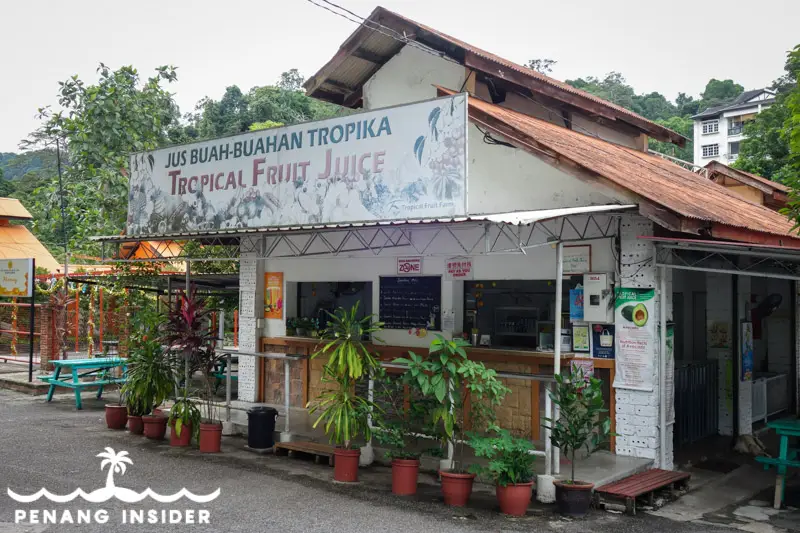
A few hundred meters down the road to your left, passed Moongate, is a parking lot with a few shops and a food court. There is a Bee Gallery that may be interesting if you have kids — did you check our full list of what to do in Penang with kids ? — and next to it the Tropical Fruit Juice shop, serving many concoctions of delicious juices made with local fruit.
On the opposite side of the padang there’s a small hawkers food complex where you can find basic roti canai, some types of Indian style fried noodles, and a fresh fruit stall. There’s also a delicious (yet a bit overpriced at RM6) ais kacang with ice cream .
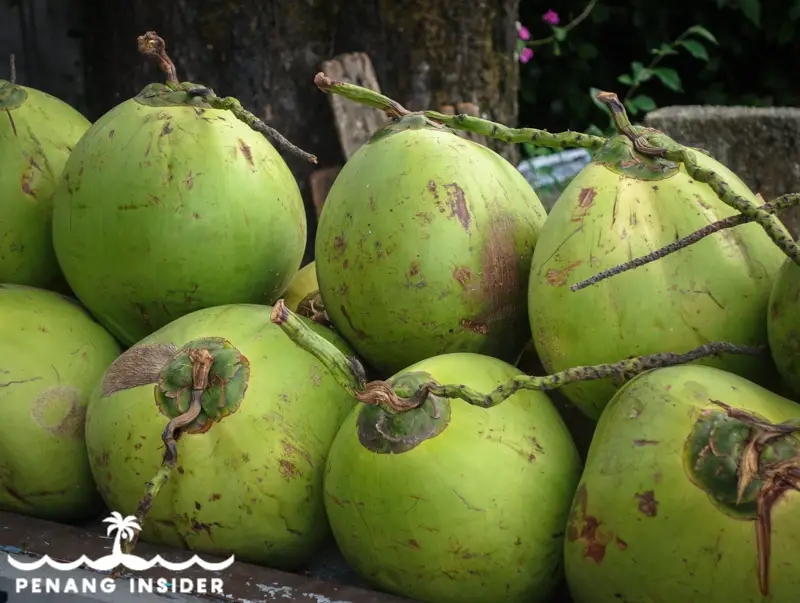
Around the corner and along the road are a couple of other simple shops where you can buy fresh coconut juice . Let the stall owner crack your kelapa muda open with his kife, sit down, and relax. Your legs have certainly earned it.
RELATED ARTICLES MORE FROM AUTHOR

MYAirline Review: Is It the Right Choice for Your Next Trip?
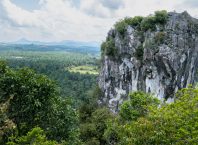
Paya Gunung Via Ferrata: Challenge Yourself on the Most Hair-rising Climb in Jerantut, Pahang
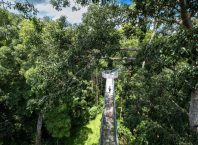
Sungai Relau Treetop Walk: A new attraction revives Malaysia’s oldest national park
Leave a reply cancel reply.
Save my name, email, and website in this browser for the next time I comment.

EDITOR PICKS

9 Striking Things to See in Singapore’s Civic District

The 8 Best Must-Try Food And Cafes in Joo Chiat, Singapore’s...
Popular posts.

48 Hours in Penang the Smart Way

Blood Sweat and Tears: What I Learned about Friendship in Penang
Popular category.
- See & Do 76
- Getaways 59
- Eat & Drink 29
- Accommodation 18
- Bahasa Indonesia
- Slovenščina
- Science & Tech
- Russian Kitchen
Why Moscow is the greenest city in the world

A house at Nezhinskaya street, Moscow
According to WorldAtlas, 54 percent of Moscow’s territory is covered by public parks and gardens, making it the greenest city in the world .
There are 20 square meters of trees and shrubs per inhabitant in Moscow – many times more than in Tokyo, London or Beijing. This happened because of the combination of two factors: first, Moscow was initially built amongst the forests of the North-Eastern Russia, second, landscaping and greening started in Moscow as early as the 18th century.
Fortress on a forest hill
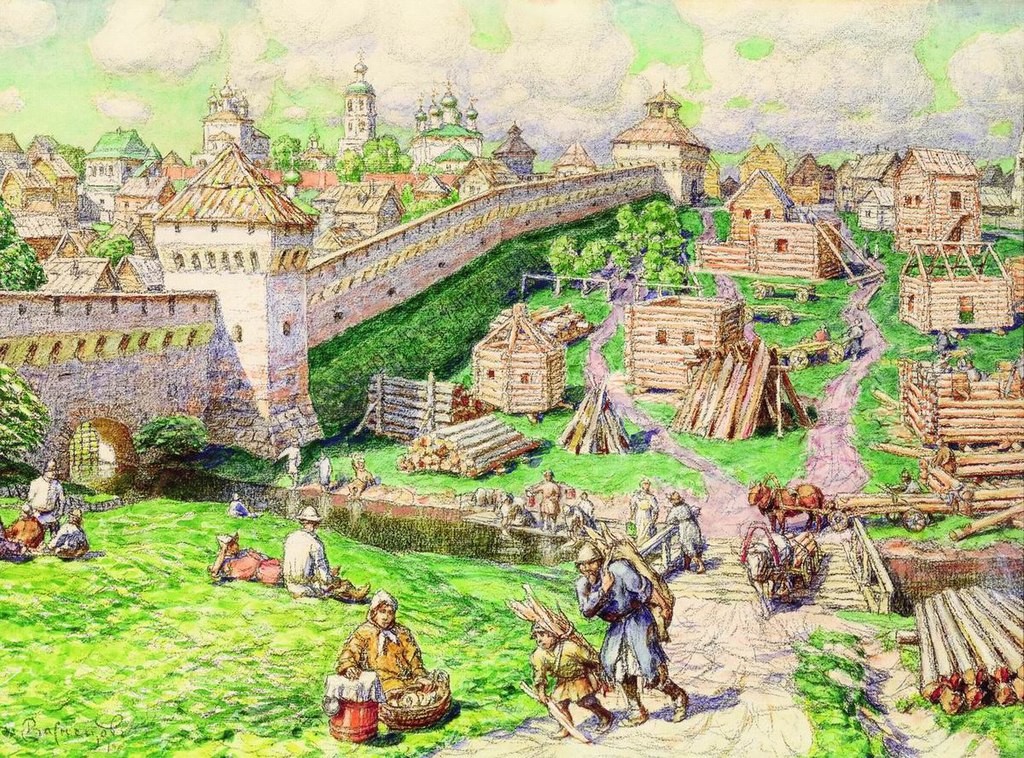
Apollinaryi Vasnetsov. The Trubnaya Square in Moscow in the 17th century.
Borovitsky hill, upon which the Moscow Kremlin stands, is named after the word ‘bor’ – ‘forest’ in Russian. And indeed, in the 11th century there was an oak grove here, where the central streets of Moscow are now. Another example is the Church of St. John the Evangelist under the Elm Tree, now on Novaya Square, not far away from the Kremlin. Historian of Moscow Pyotr Sytin believed this church had its name in honor of the dense forest that protected the eastern part of the Kremlin until the 15th century.

Church of St. John the Evangelist under the Elm Tree
In these places, spruce and pine trees predominated, which were actively cut down and used by the city's population for construction. The city was expanding, and the forest was being cut down at its outskirts for building new houses. But these ‘outskirts’ were so close to the Kremlin that it’s now the very center of the city – even in the 17th century, places like Trubnaya Square (a 20 minute walk from the Kremlin) were still largely green, and until the early 19th century, bushes and trees grew right beside the Kremlin wall, in the now obsolete Aloisios’ Ravine, constructed in the 16th century under the supervision of Italian architect Aloisio the New. However, the city’s greenery wasn’t organized in a systematic way.
The Boulevard Ring
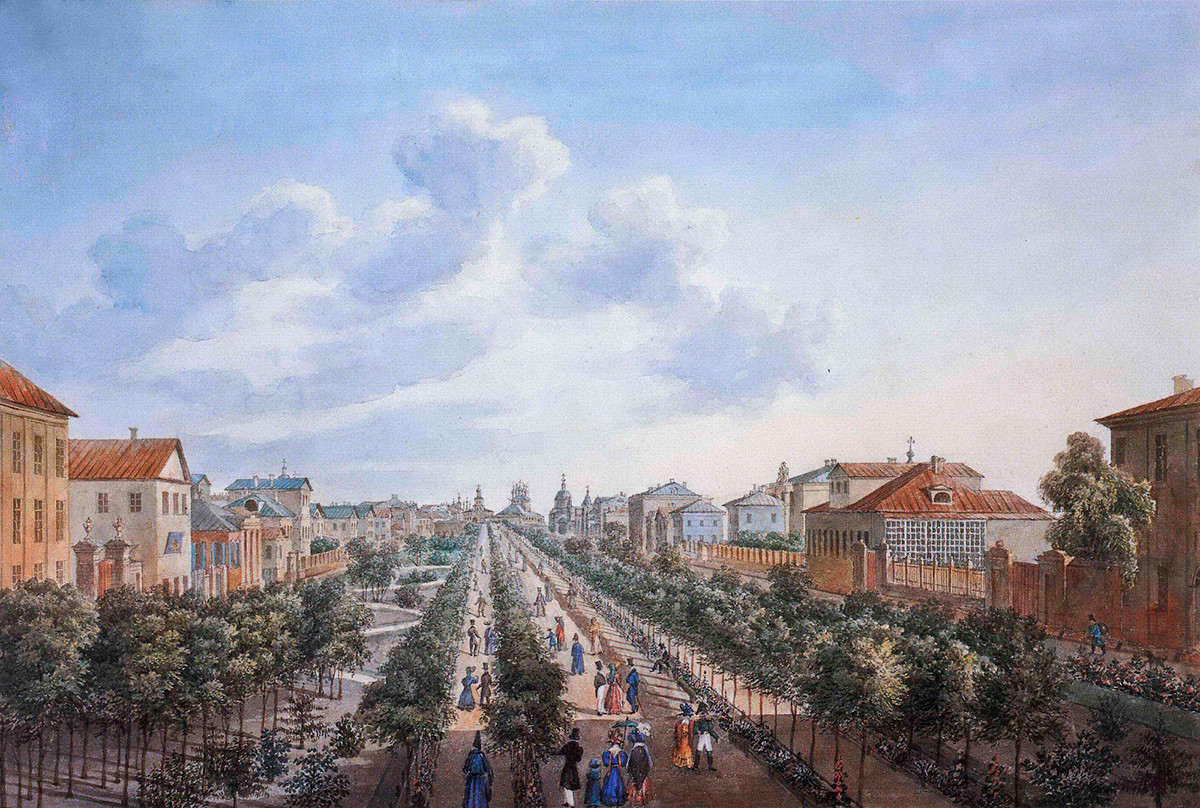
Tverskoy Boulevard in Moscow, early 19th century
Catherine the Great, who wanted to update the old capital, ordered the construction of the Boulevard Ring. It took the place of the obsolete Belyi Gorod (‘White City’) fortification wall.
“Moscow is encircled by boulevards – they are not only an ornament, but also an important benefit,” Vladimir Odoevsky, a 19th century Russian journalist, wrote. “When foreigners, looking at the plan of Moscow, see this green ring, we are proud to explain to them that in winter and summer, both sick and healthy, and the elderly, and children can walk around the city, walk between the trees and not be afraid of being hit by a carriage.”
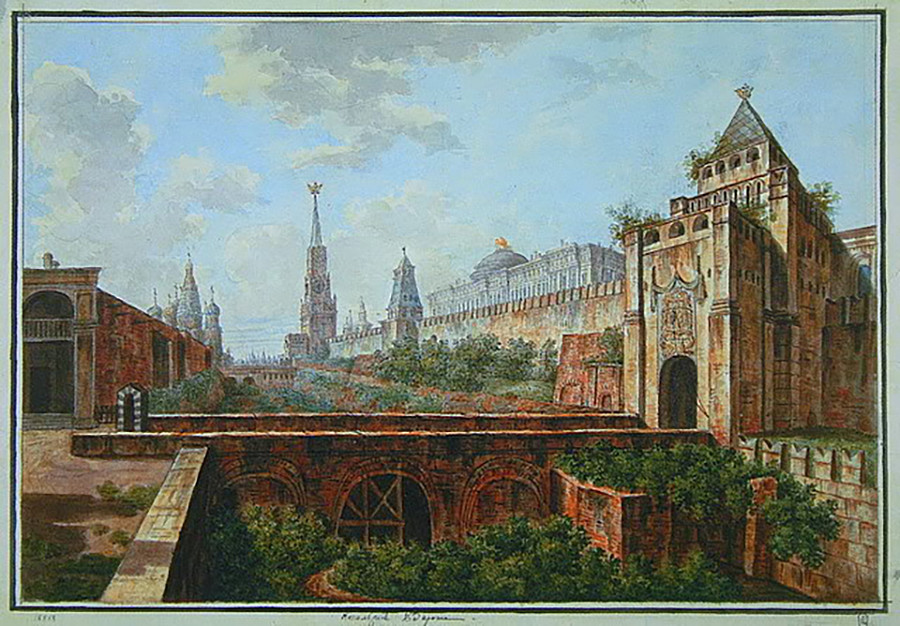
The Kremlin ravine, the 1800s
After the fire of 1812, another green ring appeared – the Sadovoye (‘Garden’) ring, a wide street encircling the fast-growing center and covered in private houses’ gardens.
Greened by the Reds
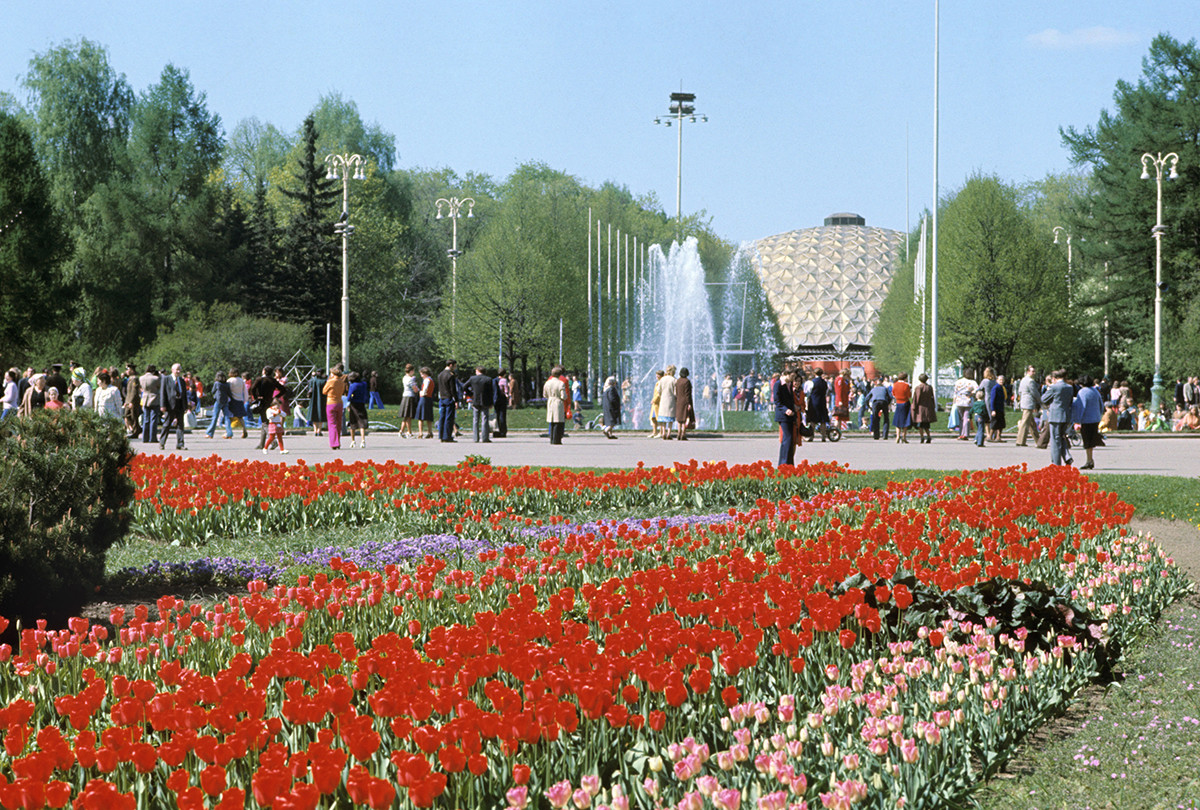
Sokolniki Park, Moscow
Rapid urbanization starting after the 1917 revolution brought swarms of new inhabitants to Moscow, and the old city had to adjust to the needs of the industrial state. Unfortunately, with the 1930s Stalinist plan of Moscow reconstruction, many historical buildings were demolished, and main streets turned into highways.
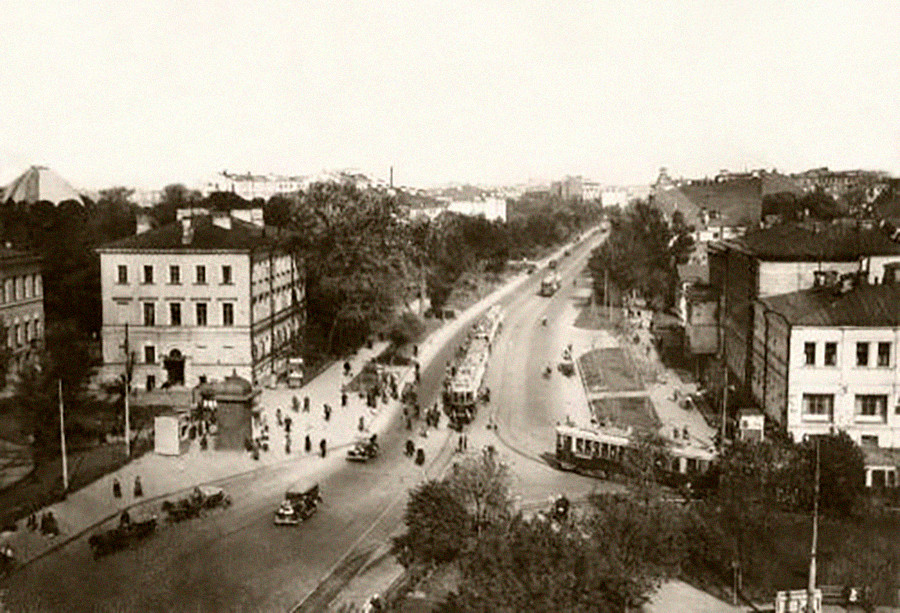
Sadovaya-Kudrinskaya, Garden Ring, Moscow, 1928
In the 1930s, the Garden Ring was paved, trees at many squares and streets were cut down, there even were plans to destroy the Boulevard Ring, but fortunately they were not carried out. Georgy Popov (1906-1968), a Moscow Communist Party official, remembered that after WWII, in 1947, Stalin personally supervised the plans for re-greening the city center: “I remember how quickly we were deployed. We planted greenery on Dzerzhinsky Square (now Lubyanka Square), and in Okhotny Ryad, restored the garden on Sverdlov Square (now – Teatralnaya Square), and planted on Bolotnaya Square. Gorky Street was preplanted from Manezhnaya Square to Belorussky railway station. This was the first step in the greening of the central part of the city,” Popov wrote.
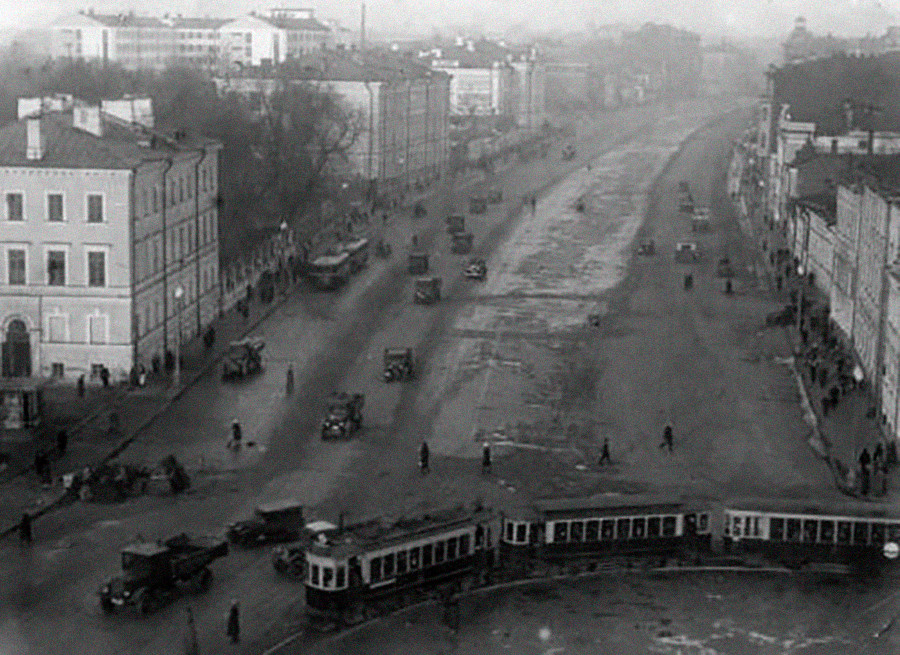
Sadovaya-Kudrinskaya, Garden Ring, Moscow, 1936
In 1951, the Moscow government chose from as many as 272 projects for re-greening Moscow. By 1961, forestry workers had planted over 500,000 trees and shrubs in the city. Small-leaved linden, blue spruce, fir, western thuja, irga, golden currant, barberry, and roses.
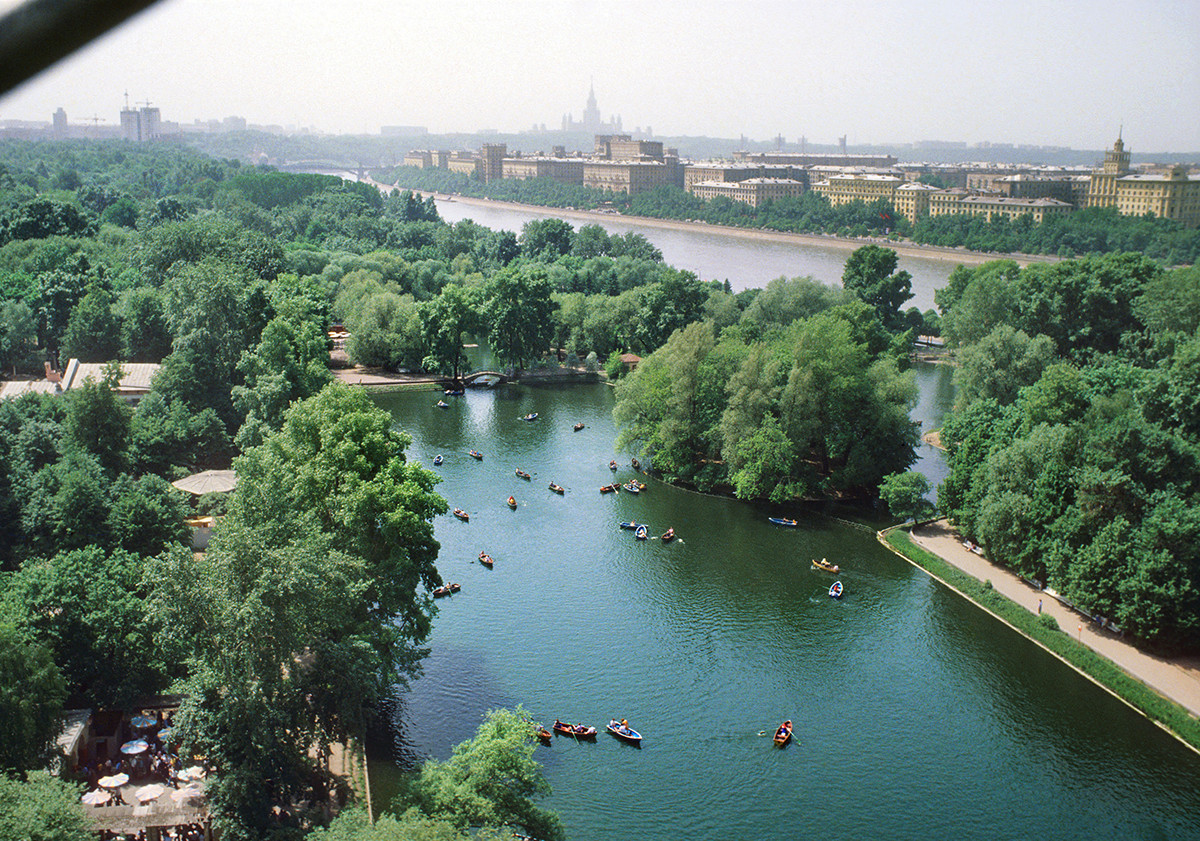
Gorky Park, Moscow, 1979
The 1950s-1960s also saw the reconstruction of Moscow’s biggest public parks. Gorky Park, transformed in the 1930s from Neskuchny (‘Merry’’) Garden, a 19th century public leisure space, has seen over 2,000 trees and 25,000 shrubs planted annually. The total space of the park expanded to 2.2 sq km, and the total length of the park’s alleys reached 30 km.
In the 20th century, more big parks were organized in Moscow: Sokolniki (5.16 sq km), Izmailovsky (16 sq km), Pokrovskoye-Streshnevo (2.22 sq km), Bitsevski Park (22 sq km), and, most importantly, Losiny Ostrov National Park (116 sq km), the largest urban park in Europe.
Felling a tree, planting two
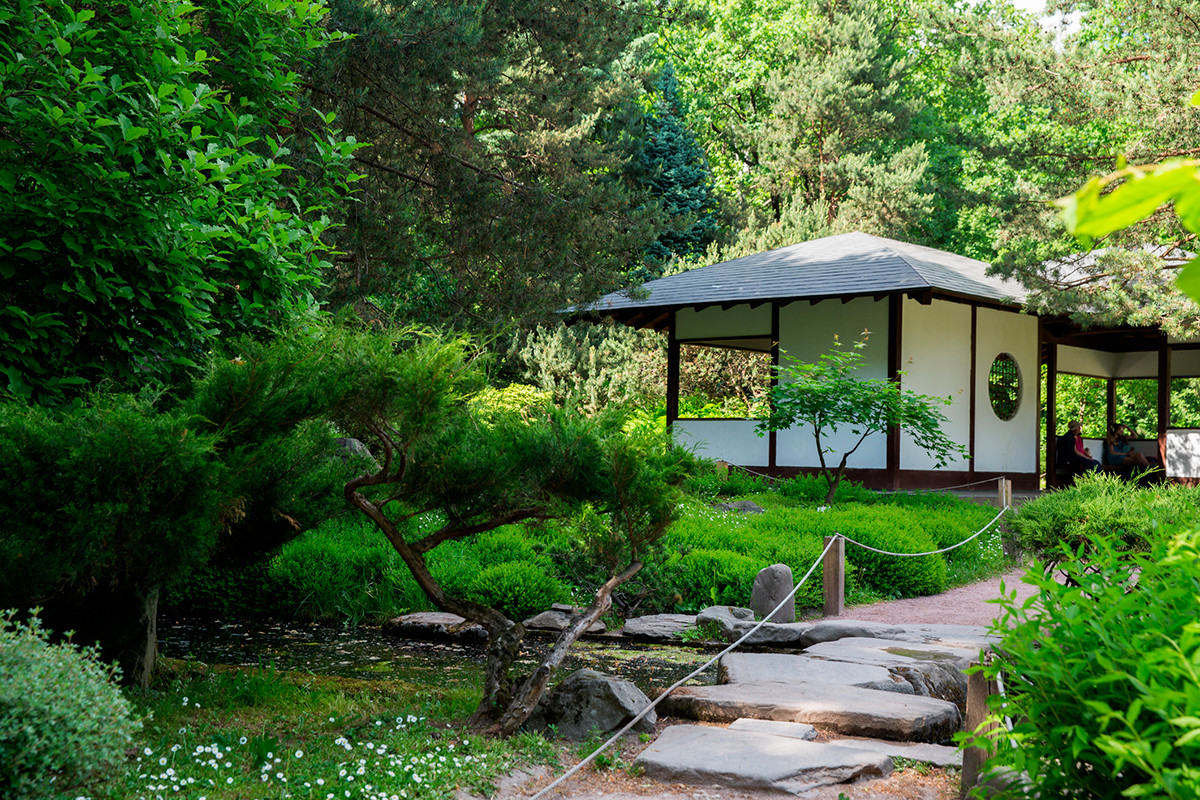
Japanese garden in Main Botanical Garden in Moscow
Currently, Moscow’s green affairs are under strict control from the city’s government. In 2010-2016, 432,000 trees and 3.5 million shrubs were planted, and since 2013, a government initiative called “A Million Trees” has been implemented, meant to plant vegetation inside the inner yards of apartment buildings, with the plants being chosen on a digital app platform by locals.
Cutting down a tree in Moscow (for example, during a house construction) is very difficult, and if you still have to resort to such a measure, then the developer is obliged to compensate for this by planting two trees. However, these rules do not yet apply to other Russian regions, even in close proximity to the city – for example, the Moscow Oblast’. In 2007-2012 in Khimki, a suburb in Moscow Oblast’, a part of forest containing ancient oaks was being cut down for a road construction project. The project was eventually implemented, and a section of toll road was organized, causing air pollution near the highway, and in addition, noise pollution in the forest.
According to Moscow government’s official portal , by the end of the year, over 5,000 trees and 136,000 shrubs will be planted in Moscow, so the city is not going to lose its status as the greenest capital of the world any time soon. However, the indexes of the air pollution in Moscow are still unfortunately high – the city is still Russia’s largest trade and industrial center. The World Air Quality index places Moscow in 27th place in the air pollution ranking.
If using any of Russia Beyond's content, partly or in full, always provide an active hyperlink to the original material.
to our newsletter!
Get the week's best stories straight to your inbox
- 7 more unusual houses of Moscow
- The most fairy-tale houses of old Moscow (PHOTOS)
- 7 MOST extravagant houses of 19th century Moscow
This website uses cookies. Click here to find out more.
- Share full article
Advertisement
Betye Saar Is Making Some of the Best Work of Her Life.

By Guy Trebay
Being raised during the Depression, we all learned to be creative with what we had on hand. At Christmas or on my birthday, I always got art supplies, and I was jealous that my siblings got bikes and stuff. I realize now that my parents were fostering my creativity.
An early influence on my becoming an artist was Simon Rodia. My grandmother lived in Watts, and we would walk by the Watts Towers when they were being built. I was fascinated by how he used bottle caps and corn cobs and broken plates — trash, essentially — to make art, to make something beautiful. Then, much later, in the 1960s, I saw the work of Joseph Cornell. He refined the use of found objects and materials and boxes, and I thought, “Wow, I’ve kind of been doing that, too.” I didn’t know it was called assemblage, but it made sense to me and set me in that direction as an artist.
The main challenge, I guess, to being an artist is how to make a living. But being a creative person means you have to find ways to do this. I studied design at U.C.L.A., and after I graduated, I made greeting cards, I made jewelry, I got into printmaking and then sold my prints. I taught art classes in colleges all over the states. My creativity kept evolving with my needs as I got married and bought a house, had my daughters and put them through college. Through it all, I loved making art. It kept me going.
I still want to make art. Sometimes in the morning when I wake up, it’s hard to get out of bed, hard to get back into my body and get it to move. But I do it. Not everyone has a reason to get out of bed, something they love to do and that gives their life meaning. I am so lucky that I have that as part of my life. I don’t really think about my age, unless someone mentions it, though I guess I feel middle-aged — which for me is, like, 50 to 70. It would be kind of neat to live to 100, to have 100 revolutions around the sun. I’m pretty close.
- Greeting Card #8 Betye Saar, via Roberts Projects; Photo by Paul Salveson
- The inside of Greeting Card #8 Betye Saar, via Roberts Projects; Photo by Paul Salveson
- Greeting Card #1 Betye Saar, via Roberts Projects; Photo by Paul Salveson
- The inside of Greeting Card #1 Betye Saar, via Roberts Projects; Photo by Paul Salveson
- Memories Lost at Sea, 2024 Betye Saar, via Roberts Projects; Photo by Paul Salveson
- The exterior of Memories Lost at Sea, 2024. Betye Saar, via Roberts Projects; Photo by Paul Salveson
- A Different Destiny, 2024 Betye Saar, via Roberts Projects; Photo by Paul Salveson
- The exterior A Different Destiny, 2024. Betye Saar, via Roberts Projects; Photo by Paul Salveson
- Dark Passage 2024 Betye Saar, via Roberts Projects; Photo by Paul Salveson
- The exterior of Dark Passage 2024.
- Drifting Toward Twilight, 2023 (installation view) Betye Saar, via The Huntington Library, Art Museum, and Botanical Gardens; Photo by Joshua White
Current and upcoming projects : Completed “Drifting Toward Twilight,” an installation at the Huntington Library in the Bronx; “Betye Saar: Heart of a Wanderer” exhibition at the Isabella Stewart Gardner Museum in Boston; “Betye Saar: Serious Moonlight” at the Kunstmuseum in Lucerne, Switzerland; and completed a newly commissioned artwork for “Paraventi; Folding Screens from the 17th to the 21st Century” at the Fondazione Prada in Milan.
This interview has been edited and condensed.
Guy Trebay is a reporter for the Style section of The Times, writing about the intersections of style, culture, art and fashion. More about Guy Trebay
Explore Our Style Coverage
The latest in fashion, trends, love and more..
Is Humanity Out of Fashion?: After a time of relative stability, fashion is in a period of uncertainty because of broader political and economic forces. Or is it simply a generational passing of the torch?
Boots, Backpack and a Ubiquitous App: Fourteen years and one Apple App of the Year award in, AllTrails has become something rare : a tool that works for both experts and newbies.
Alan Cumming’s Outsider Cabaret: The 59-year-old actor, who revels in doing “weird things all the time,” brings his cabaret show about aging to New York.
Gisele Bündchen on Healthy Eating: The supermodel opens up about life in Miami and her new cookbook, “Nourish.”
Does the Peace Sign Stand a Chance?: For a younger generation, the once-powerful protest symbol packs about as much of a punch as a smiley face.
New York City’s Easter Parade: A recurring cast of milliners and costumed spectators trading nods with the more casual participants — who found creative ways to create their own grand impressions — was a particular delight to see.

IMAGES
VIDEO
COMMENTS
In the early 1800s Jean Gesner, a Swiss physician and botanist, noted that by the end of the 18th century there were 1,600 botanical gardens in Europe. During the 18th and 19th centuries, the science of botany took form, and many of the important botanists of the period were directors of the botanical gardens of their day. Since that time, the classical botanical garden as a teaching and ...
Orto botanico di Pisa operated by the University of Pisa: the first university botanic garden in Europe, established in 1544 under botanist Luca Ghini, it was relocated in 1563 and again in 1591.. A botanical garden or botanic garden is a garden with a documented collection of living plants for the purpose of scientific research, conservation, display, and education.
Essay # 1. Functions of Botanic Garden: 1. Botanic Garden performs as an institute for different types of botanical research, particularly the flora of that region. 2. The entire fundamental i.e., taxonomy and many applied researches e.g., silviculture (the growing and tending of trees as a branch of forestry); horticulture (the art of ...
1. Botanical gardens act as out-door laboratories. 2. Initiate studies on the tropical and temperate ecosystems and their biota, before they are lost to science and preserve such systems. 3. Serve as centres of gene pools or germ plasm bank of wild relatives of economically important plants. 4.
Botanical gardens not only serve as taxonomic and. systematic research centers ( Dosmann, 2006; Stevens, 2007), but. they also play an important role as valuable sources of plant ecology. data ...
The botanical garden is one of the most interesting places among the remarkable sights in almost every city. Last month I was lucky to visit the New York Botanical Garden presenting the vast diversity of plants from the different parts of our planet. The aim of this essay is to tell you about my visit describing the collection of the botanical ...
Botanical gardens, such as the Royal Botanic Gardens Victoria, Australia, are incorporating managed relocation-type methods into their landscape plans - that is, they are planning to transition their living collections to species that are likely to succeed in future climate conditions (Royal Botanic Gardens Board Victoria, 2016; Kendal ...
The topic for this essay is the role of botanical gardens in plant conservation. The essay will be divided into four main parts. The first part discuss about the botanical garden. This part will include the introduction, history and development, network and function of botanical garden. Second part will explain the importance of plant ...
This editorial, and its associated collection of papers, considers the critical relationships between nature, culture and education in contemporary botanic gardens and the ways in which visitors navigate their journeys, as demonstrated by research. Increasingly, humans are an urban species prone to 'plant blindness' (Wandersee and Schussler ...
Peradeniya Botanic Gardens, botanical garden in Peradeniya, near Kandy, Sri Lanka, noted for its rich and varied collections of tropical woody plants. Occupying 59 hectares (146 acres), it has about 4,000 species of plants. The most important specimens of the garden include palms, some of which are planted in impressive avenues. Significant ...
The Botanical Garden was made up of plants from all over the Soviet Union. The garden's founder, botanist Nikolai Tsitsin, divided the garden into phytogeographical expositions from "Central Europe" to "The Far East". The garden's flora was also enriched with the species that Soviet researchers brought from Europe and America.
During my Thanksgiving break, I went to the U.S. Botanic Garden in Washington D.C. I went with a couple of my friends from class and we all had a great time, despite being in the cold. When we entered the building, we were greeted by the employees. There were beautiful plants as soon as you walk through the doors and a map that leads you to the ...
Royal Botanic Gardens, Peradeniya are about 5.5 km to the west of the city of Kandy in the Central Province of Sri Lanka.In 2016, the garden was visited by 1.2 million locals and 400,000 foreign visitors. It is near the Mahaweli River (The longest river in Sri Lanka). It is renowned for its collection of orchids.The garden includes more than 4000 species of plants, including orchids, spices ...
Hakgala Botanical Garden is situated on the Nuwara Eliya - Badulla main road, 16 km from Nuwara Eliya and extents for about 28 hectares. The garden has a cool temperate climate because of altitude is 5,400 feet above sea level. The mean annual temperature ranges between 16 °C to 30 °C during the course of a year. [3]
It was a Royal Gardens from 1780 - 1798. The gardens are home to a large and diverse variety of plants especially including endemics and species extinct in the wild. This 60 ha land at an elevation of 460 mt. above sea level in Peradeniya includes 4000 plant species. The gardens occupy a horse- shoes shapes peninsula around which flows the ...
That's how a single-university system became a multi-institutional consortium in April 2019. The Herbarium of the Main Botanical Garden, Russian Academy of Sciences (MHA) is the fourth-largest Russian herbarium, with 610K specimens of vascular plants. It holds vast collections from the Moscow metropolitan area (City of Moscow & Moscow Oblast ...
The National Botanical Garden, Godawari, Lalitpur, Nepal has established in 1962 AD (2019BS). This botanical garden was designed by two British designers G.A.C. Herklots and Tony Schilling. It is widely regarded as a center of plant conservation, education, research and recreation.
15 Visit Penang Botanic Gardens Waterfall. A painting of Penang Botanic Gardens' Waterfall (courtesy of Penang State Museum and Art Gallery, Public domain, via Wikimedia Commons) The call to fame of Penang Botanic Gardens, this 122-meter-tall three-tiered waterfall was extremely famous back in the 1960s and 1970s.
1517 Words. 7 Pages. Open Document. Essay Sample Check Writing Quality. Show More. On September 23, 2016, five members of the Conservation Biology course traveled to the Missouri Botanical Gardens in St. Louis, Missouri to observe how institutions such as botanical gardens and arboretums work to conserve plant species from around the nation.
Lal Bagh. / 12.95; 77.59. Lalbagh Botanical Garden or simply Lalbagh ( lit. 'red garden'), is an botanical garden in Bangalore, India, with an over 200-year history. First planned and laid out during the dalavaiship of Hyder Ali, the garden was later managed under numerous British Superintendents before Indian Independence.
The topic for this essay is the role of botanical gardens in plant conservation. The essay will be divided into four main parts. The first part discuss about the botanical garden. This part will include the introduction, history and development, network and function of botanical garden. Second part will explain the importance of plant conservation […]
Japanese garden in Main Botanical Garden in Moscow. Legion Media Currently, Moscow's green affairs are under strict control from the city's government. In 2010-2016, 432,000 trees and 3.5 ...
Betye Saar in February. Kayla James for The New York Times. By Guy Trebay. Updated. April 5, 2024, 6:00 p.m. ET. Being raised during the Depression, we all learned to be creative with what we had ...